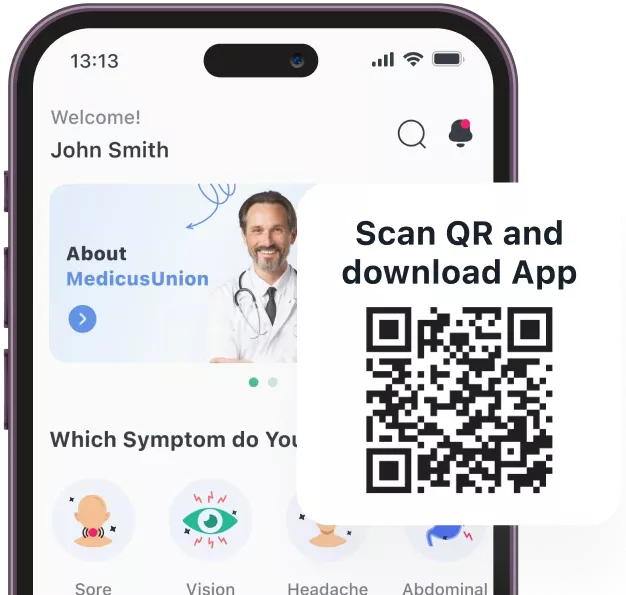English
Русский
Deutsch
عربي
.jpg?size=600)
The Role of Robotics in Modern Surgical Procedures
MedicusUnion Team
November 21, 2023
4 min. read
Discover the transformative impact of robotic-assisted surgery on patient care. Learn about fascinating robotic systems and the integration of artificial intelligence, unveiling a promising future for precision, safety, and efficiency in healthcare.
In the ever-evolving landscape of modern medicine, technological advancements have made a profound impact on patient care. One of the most remarkable innovations in recent years is the integration of robotics into surgical procedures. At MedicusUnion, we recognize the transformative potential of robotic-assisted surgery, which not only enhances precision but also improves patient outcomes. In this article, we will explore the role of robotics in modern surgical procedures and its benefits.
Past
The term "robot" was coined in 1920 by Karel Capek in his play "Rossum's Universal Robots," deriving from the Czech word "robota," meaning forced work. While robots have been widely used in industry, the history of robotics in surgery is relatively recent, with its potential recognized in the 1980s. Early efforts aimed at autonomous surgery, exemplified by the PROBOT, which performed robotic prostate resection.
However, the focus shifted to "master/slave" technology, as seen in the ZEUS and da Vinci systems. ZEUS, a three-armed system, successfully trialed in cardiac and gynecological surgeries, while da Vinci, with four arms, seven degrees of freedom, and 3D vision, gained FDA approval in 2000. Subsequently, the da Vinci system dominated the market for two decades after the merger of Intuitive Surgical and Computer Motion in 2003.
Interesting Robotic Surgical Systems in Use
There are some interesting robotic surgical systems being used that have made significant improvements in colonoscopy procedures:
- One such system, known as "Endotics," is a small robotic device that moves like an inchworm using vacuum-based technology. It helps make colonoscopy procedures more accurate.
- Another innovation is the "constrained tendon-driven serpentine mechanism (CTSM)," which provides better control and a wider range of movement for colonoscopy procedures.
- The NeoGuide colonoscopy system is an advanced soft robot that is flexible, can interact safely with the body, and has improved dexterity. It uses a computer-assisted tube with articulation, similar to a snake, allowing it to adapt its shape as it moves through the colon. It also has stiffness control to prevent discomfort during the procedure.
- The Minimally Invasive Neurosurgical Intracranial Robot (MINIR) is used for brain tumor removal and is based on CTSM technology with SMA actuators.
- The Flex system uses cables to adjust the flexibility of the endoscope, making it possible to perform various procedures with less space compared to the da Vinci system.
- The Meshworm design imitates the movement of an earthworm and is designed for colonoscopy procedures, similar to the Invendoscope.
- The STIFF-FLOP soft robot takes inspiration from an octopus's arm and uses fluidic chambers with a modular approach to control stiffness and bending.
- The Aer-O-Scope is an Israeli colonoscope that propels itself using carbon dioxide, eliminating the need for external pushing.
- Remote endoscopic procedures guided by MRI provide excellent visibility of the scope, as long as electromagnetic fields are eliminated, ensuring safety and accuracy during the operation.
Artificial intelligence
Artificial intelligence (AI) and machine learning are revolutionizing surgical robotics. Machine learning, a subset of AI, can identify hidden patterns in large datasets, providing new research possibilities, especially in surgery, where videos yield much more data than CT scans. Machine learning is also set to enhance surgical training by using algorithms to observe and understand individual surgeons' techniques, assess their performance, and assist in real-time decision-making.
AI has sparked interest in autonomous robot development, particularly in the operating room, utilizing computer vision and deep learning to understand and interact with visual data, such as object detection. However, real-time data collection challenges in global surgery and data sharing issues may delay the full implementation of autonomous robotics in surgery.
Future Possibilities
As technology continues to advance, we can anticipate even more groundbreaking developments in the field of robotic-assisted surgery. The future holds the promise of increased automation, artificial intelligence integration, and improved haptic feedback, further enhancing the capabilities of robotic systems in the operating room.
In conclusion, the role of robotics in modern surgical procedures is nothing short of revolutionary. It has elevated the precision, safety, and efficiency of surgeries, offering numerous benefits to both patients and healthcare professionals. At MedicusUnion, we believe that embracing these technological advancements is essential to provide the best possible care to our patients and continue pushing the boundaries of medical innovation. With telemedicine and robotics working hand in hand, we're witnessing a transformation in the way surgeries are performed and accessed, and the future looks incredibly promising for the world of healthcare.

Get the MedicusUnion App!
- Certified Doctors
- Video consultation with a doctor
- Simultaneous interpreter during consultations